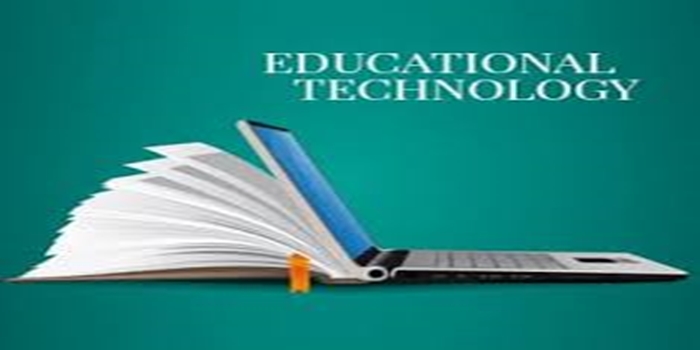In this article, we discussed the meaning of educational technology, the examples, the benefits, the purpose, and characteries.
Definition
Educational technology is the combined use of computer hardware, software, and educational theory and practice to enable learning. When referred to with its abbreviation, “EdTech”, it often refers to the industry of companies that create educational technology.
Educational technology, or EdTech, is the use of technology to improve teaching and learning. It includes the study of how to design, develop, and implement learning materials and environments.
How does EdTech help students and teachers?
Personalized learning: EdTech can help teachers create customized learning experiences for students with different learning styles and abilities.
Collaboration: EdTech can create more collaborative learning environments.
Access to information: EdTech can provide students with easy access to information.
Technical skills: EdTech can help students develop technical skills that are useful in future careers.
Examples of educational technology include
virtual reality
learning management systems
online courses.
Gamification: Using games and competition to increase student engagement
Learning analytics: Platforms that analyze learning outcomes to improve online and personalized learning
Online forums and networks: Allow teachers and students to collaborate and share resources
Canva: A design tool with templates for handouts and presentations, plus a video editor
Google Classroom: A platform for teachers to manage students, personalize sites, and measure learning
Other examples of educational technology include: Augmented reality (AR), Digital readers, Classroom management software, and Online quiz makers.
Educational technology is sometimes called “EdTech”. It can be used by teachers and students across all grades.
Educational technology can help:
Create more engaging learning experiences
Improve communication between teachers and parents
Provide a centralized system for managing course materials
Allow students to visit remote areas and encounter ancient civilizations or dinosaurs
Help teachers design personalized learning platforms.
Educational technology has many Benefits
for students
Personalized learning
Technology can tailor lessons to individual needs, allowing students to work at their own pace.
Collaboration
Students can work together on group projects, share ideas, and receive feedback from peers and teachers.
Access to information
Students can access a wide range of resources, including educational websites, e-books, videos, and interactive simulations.
Digital literacy
Students develop digital literacy skills that are essential for future careers.
Self-paced learning
Students can study when and where it’s convenient.
Benefits for educators
Efficient assessments and feedback: Technology can help educators provide efficient assessments and feedback.
Data-driven insights: Technology can provide educators with data-driven insights.
Professional development: Technology can help educators develop professionally.
Benefits for learning
Enhanced engagement: This can make learning more interactive, relevant, and enjoyable.
Accelerated learning: it can help students learn more quickly.
Deepen understanding: Technology can help students deepen their understanding of difficult concepts.
The purpose of educational technology is to improve the following:
The learning experience for students and teachers.
It does this by helping teachers engage students, and by providing students with more access to learning materials.
How educational technology helps teachers
Create engaging lessons: Teachers can use technology to create lessons that are memorable and exciting.
Organize assignments: Teachers can use programs to help organize student assignments.
Automate tasks: Teachers can use programs to automate tedious tasks.
Connect with other teachers: Teachers can use technology to connect with other teachers and educators.
How educational technology helps students
Collaborate: Students can work together on projects and share their ideas.
Communicate: Students can communicate with their teachers and with each other.
Access learning materials: Students can access learning materials from anywhere, even if they are sick or have bad weather.
Gain practical experience: Students can gain practical experience in coordinating remotely and sharing information.
Educational technology, or “EdTech”, has many characteristics, including:
Improves teaching: EdTech can make teaching more effective, interesting, and scientific.
Personalizes learning: EdTech can help individualize learning to meet the needs of different learners.
Equalizes educational opportunities: EdTech can help make education more accessible to everyone.
Meets mass education needs: EdTech can help meet the needs of large numbers of students.
Dynamic: EdTech is a constantly evolving technology that can help meet the needs of modern learners.
Based on scientific knowledge: EdTech is based on scientific knowledge from a variety of disciplines, including psychology, sociology, and computer science.
Uses a variety of media: EdTech uses a variety of media, including audio-visual aids, video conferencing cameras, and educational gaming platforms.
Supports different types of learning: EdTech can support both synchronous and asynchronous learning.
Accessible: EdTech should be accessible to all users, including those with disabilities.
Conclusion
Technology in education refers to the use of digital tools and platforms within the classroom to enhance learning experiences, providing students with access to diverse resources, allowing interactive learning, and enabling personalized instruction, ultimately preparing them for a technologically driven world while also empowering teachers to create engaging and adaptable learning environments; key aspects include online learning platforms, digital content, collaborative tools, and communication applications, all contributing to improved student engagement and accessibility to information.


